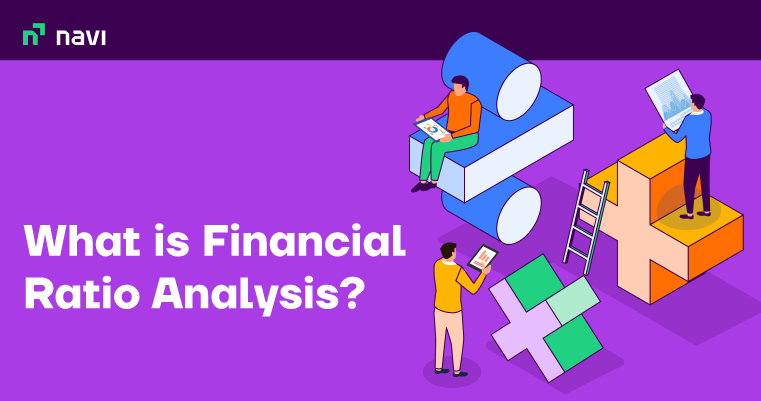Gig Economy – Definition, Advantages and Disadvantages

While freelance or ‘gig work’ has always been an option for supplementing one’s income, it is now becoming the primary mode of employment for an increasing percentage of the urban workforce. Any economy where temporary work positions are common is known as a gig economy.
In this blog, we have explained how a gig economy works, its advantages and disadvantages, and its impact in detail Read on!
What is a Gig Economy?
Gig economy is a free market system where firms engage independent workers for short-term commitments to fill in temporary positions. Here, a gig worker is a part of a broad category that includes a wide range of positions. Freelancers, independent contractors, project-based workers, and temporary or part-time personnel are all examples of gig workers.
Gig work can range from working as an uber driver or a restaurant delivery executive to writing code or freelance essays.
How Does a Gig Economy Work?
The gig economy is a relatively new phenomenon, with a variety of factors contributing to its rise. The following are the two most crucial factors:
- Increasing workforce mobility.
- Increasing remote work by the use of digital platforms.
As a result, employment is becoming increasingly globalised. Gig workers can work for an employer anywhere in the world. Simultaneously, companies can choose the best candidate for a certain project from a bigger talent pool than is accessible in their local geography.
Temporary, flexible occupations are popular in a gig economy, and businesses prefer to hire independent contractors and freelancers over full-time employees – offering flexibility to both sides of the table.
Also Read
Common Gig Economy Jobs and Industries
Gig economy occupations include well-known roles in a variety of industries and jobs. Here are a few gig economy examples:
- Finance and accounting
- Administrative assistance
- Graphic design
- Art and music
- Carpentry and similar trades
- Education – especially tutoring
- Copywriting and content writing
- Information security engineers and network analysts
- Photography
- Project management
- Software development
- User experience and interaction design
- Transportation services
What Impacts a Gig Economy?
Factors influencing gig work and jobs, in general, include the following.
- The gig economy is affected by changing political, economic, and commercial factors.
- Artificial intelligence and other automated technologies are continuously disrupting the job market.
- Digitisation has given a platform to talented workers to look for gigs suiting their schedules and payment.
- Financial pressure and the need for employment flexibility for organisations, especially with the changing job market and volatile economy.
The Pros and Cons of Gig Economy for Companies
Advantages of gig economy:
1. Cost Effectiveness
The cost is one of the reasons to begin taking advantage of the gig economy. Because firms do not have to pay for benefits or onboarding fees associated with a full-time employee, freelancing employees are frequently less expensive than other workers. This helps companies to save costs and just pay for the real labour provided by a freelancer.
In some cases, hiring talent in your local geography might also be far more expensive than other parts of the country or the world. Companies might be incentivized to explore offshore gig workers here.
2. Support for Short-term Projects
Perhaps your organisation merely requires minor assistance in implementing a new programme or service.
When you engage a full-time employee, you must find work for them when the project is completed, but this is not the case when you use the gig worker. When the project is over, the gig employee can either migrate to a new project, or can be let go with far less paperwork than a full-timer.
3. Ability to Scale Fast
Many smaller businesses or startups had discovered that hiring freelancers allowed them to scale their business quickly. Small businesses benefit the most from the gig economy because they do not need to offer office space, equipment, or perks.
They can save time and money by not having to establish healthcare or HR processes and instead hiring individuals to undertake small chores that need to be completed at the moment.
4. Diverse Pool of Talent
Businesses may access a wide pool of flexible workers by utilising gig economy individuals. These individuals frequently operate outside of conventional business hours and typically work on weekends because they do it from home, providing firms with options and flexibility.
Firms can use them for a variety of projects based on their abilities. The diverse backgrounds that gig economy workers have can foster greater creativity and ideas for the organisation.
Disadvantages of Gig Economy:
1. Less Reliable Work
Without stringent assessment, expectations, or the experience of past work, it is hard to know whether your freelancer will actually be as effective or motivated to work. This is bad for organisations, and they need to be cautious when setting expectations and selecting freelance workers to guarantee they have a dependable workforce.
2. Commitment Issues
Because gig employees are aware that they will only be working for an organisation for a limited time, they may be seeking their next full-time role before your project is completed.
Some employers have reported that a freelancer left midway through projects due to new interests or possibilities and had to be replaced. The lack of regulations or legal recourse, while easing up red tape, can make it difficult to hold gig employees accountable.
The Pros and Cons of the Gig Economy for Workers
For individuals and professionals, supplementing their income or seeking only gig work can be very rewarding.
Benefits of Gig Economy for Workers:
1. Flexibility of Work
One of the primary reasons that professionals consider freelancing is due to the flexibility it brings. Gig work allows the freedom to accept or reject new work based on one’s own convenience and availability, which directly impacts their work-life balance.
2. Greater Independence
Most of the work that’s outsourced to gig workers generally exists as standalone tasks – where one has the independence to execute work based on their expertise, and are trusted for it. This also increases work satisfaction as, while there is frequently lesser guidance and context, there is also rarely any micromanagement.
3. A Wide Range of Jobs
Working across projects and teams is common in the gig economy – it can be incredibly exciting and bring with it a host of experience. This is far harder to get from a stable job. The learnings that come from gig working are often a great addition to your career.
Downsides for workers/contractors in a gig economy:
1. Lack of Benefits
Unfortunately, benefits that are offered to full-time employees – like pension, insurance, and notice periods – are rarely included in the majority of gig engagements.
2. Isolation and Lack of Workplace Culture
Some workers may find the remote, disconnected lifestyle of the gig economy to be an issue. Often, gig economy workers work remotely and thus miss out on the relationships and social aspects of the workplace. While this offers flexibility, it can also lead to isolation from coworkers.
3. Lack of Dependability
Workers in the gig economy have to constantly be looking for their next gig or be prepared for changes in their current one. This is not a lifestyle that is suited for all – most individuals value feeling secure and stable in their jobs.
Workers in the gig economy may suffer unexpected changes in their positions due to changes in market or organisation conditions, such as getting laid off or having their compensation reduced.
Gig Economy vs. Sharing Economy
Differences between the gig economy and the sharing economy is mentioned below:
| Sharing economy | Gig economy |
| A sharing economy is built on the sharing, acquisition, and provision of products and services through the use of an internet platform. | A gig economy means a working environment characterised by flexible and transient jobs that involve freelancers and independent contractors. |
| The benefits of a sharing economy include the utilisation of excess inventory for asset owners’ extra income and the availability of these assets to customers at a lesser cost while also providing convenience. | The benefits of a gig economy include an increase in economical and efficient services, as well as the flexibility that comes from a flexible work schedule and efficiency. |
| The sharing economy solves the challenge of unutilized asset owners and customers. | A gig economy bridges the gap between employers and independent contractors. |
What is the Future of the Gig Economy
With the rise of freelance work and recruitment platforms, gig workers can now connect with attractive projects and professional organisations across the globe. Today, the gig economy includes both employers and employees, since freelancers, contractual employees, and gig workers with skills are no longer limited to geography.
Through freelancing platforms and online job boards, technology has played a significant role in linking employers with freelancers and gig workers.
The world of work is changing due to changing demographics, employee expectations, fluid workforces, and the democratisation of technology. The scope and size of the gig economy will continue to expand as organisations shift away from geographical and experience-based recruiting and toward skill-based hiring.
Businesses should aim to profit on this (large) gig potential rather than sticking purely to the traditional model of employment.
Also Read
Final Word
Workers in the gig economy are critical to the corporate world’s ever-changing landscape. While there are advantages and disadvantages to working as a freelancer, all parties can agree that gig economy jobs are having an impact on enterprises.
Beyond just the choice of work, gig work also opens up the economy for segments of the society that don’t have employment opportunities in the current job market – such as stay-at-home moms, caretakers, students, and part-time workers.
Additionally, hiring gig workers might be less expensive as employers do not have to pay for health insurance or other perks, while they can still access highly specialised talent on a temporary/as-needed basis. This positively impacts the overall economy, making the pie bigger for all.
FAQs
Ans. The gig economy is centred on flexible, transitory, or freelance jobs that frequently involve engaging with clients or customers via an internet platform. Workers, firms, and consumers can benefit from the gig economy by making employment more adaptable to the requirements of the moment and the demand for flexible lifestyles.
Ans. The gig economy is an active choice for individuals who can’t function in the traditional job market, as well as for professionals looking to supplement their source of income with additional work. It is increasingly also becoming the engagement method of choice for both employees and employers.
Ans. The gig economy is centred on flexible, transitory, or freelance jobs that frequently involve engaging with clients or customers via an internet platform.
Ans. The most serious issues that could develop from participation in the gig economy are a lack of job security and worker rights. Another issue with the rapidly growing gig economy is that it distorts the genuine unemployment number.
Ans. Independent contractors, online platform employees, contract company workers, on-call workers, and temporary workers are all examples of gig workers. Gig workers get into legal agreements with on-demand organisations in order to supply services to the clients of the company.
Disclaimer
This article is solely for educational purposes. Navi doesn't take any responsibility for the information or claims made in the blog.

Customer’s Feedback
No comments found.What is Primary Deficit? – Example, Formula & Measures
What is a Primary Deficit? Primary Deficit is the difference between the current year’s fiscal... Read More »What is Financial Ratio Analysis? – Objectives, Types and Uses
Ratio analysis is a process that allows people to assess the financial health of a company. Using t... Read More »Treasury Management – Its Functions, Types and Benefits
Even the most well-funded business can run into huge losses if it does not have the resources to fu... Read More »How Anti Money Laundering Combats Financial Crime?
Anti Money Laundering (AML) is a system of rules, laws, regulations, and procedures that financial ... Read More »What is Salvage Value and Why is it Useful?
Salvage value, also called scrap value, is the value of a specific asset after its useful life. In ... Read More »Key Difference Between Factoring and Forfaiting in Trade Finance
Factoring and forfaiting have grown in prominence as major sources of export financing. For the uni... Read More »What is Factoring and its Importance in Financial Management?
Factoring is a practice in which a company buys the accounts receivable of another company at a dis... Read More »What is Budget Surplus: Its Effects, Advantages and Impact with Examples
When the revenue of a government, business, or individual exceeds its expenses in a given period, i... Read More »What is Balanced Budget – Components, Importance and Examples
In financial planning or the budgeting process, a balanced budget is one in which total anticipated... Read More »What Does Inflationary Gap Mean in Macroeconomics?
In macroeconomics, the difference between current and potential GDP is known as a gap. This gap is ... Read More »What is Accounting Conservatism in Finance and How Does it Work?
Accounting conservatism involves a conservative set of accounting guidelines wherein the worst-case... Read More »Multiple Linear Regression (MLP) – Uses, Formula and Examples
Various statistical models help in establishing a relationship between different variables. Multipl... Read More »Top 10 Chit Fund Schemes in India in 2023
Chit funds are one of the most popular return-generating saving schemes in India. It is a financial... Read More »10 Best Gold ETFs in India to Invest in April 2023
Gold ETFs or Gold Exchange Traded Funds are passively managed funds that track the price of physica... Read More »10 Best Demat Accounts in India for Beginners in 2023
Creation of Demat accounts revolutionised the way trades were conducted at the stock exchanges. It... Read More »20 Best Index Funds to Invest in India in April 2023
What is an Index Fund? An index fund is a type of mutual fund or exchange-traded fund (ETF) that... Read More »Best Arbitrage Mutual Funds to Invest in India in April 2023
Arbitrage funds are hybrid mutual fund schemes that aim to make low-risk profits by buying and sell... Read More »10 Best SIP Plans in India to Invest in April 2023
What is SIP? SIP or Systematic Investment Plan is a method of investing a fixed amount in ... Read More »10 Best Corporate Bond Funds in India to Invest in April 2023
Corporate bond funds are debt funds that invest at least 80% of the investment corpus in companies ... Read More »10 Best Bank for Savings Account in India [Highest Interest Rate 2023]
Savings account is a type of financial instrument offered by several banks. It lets you safely depo... Read More »


































